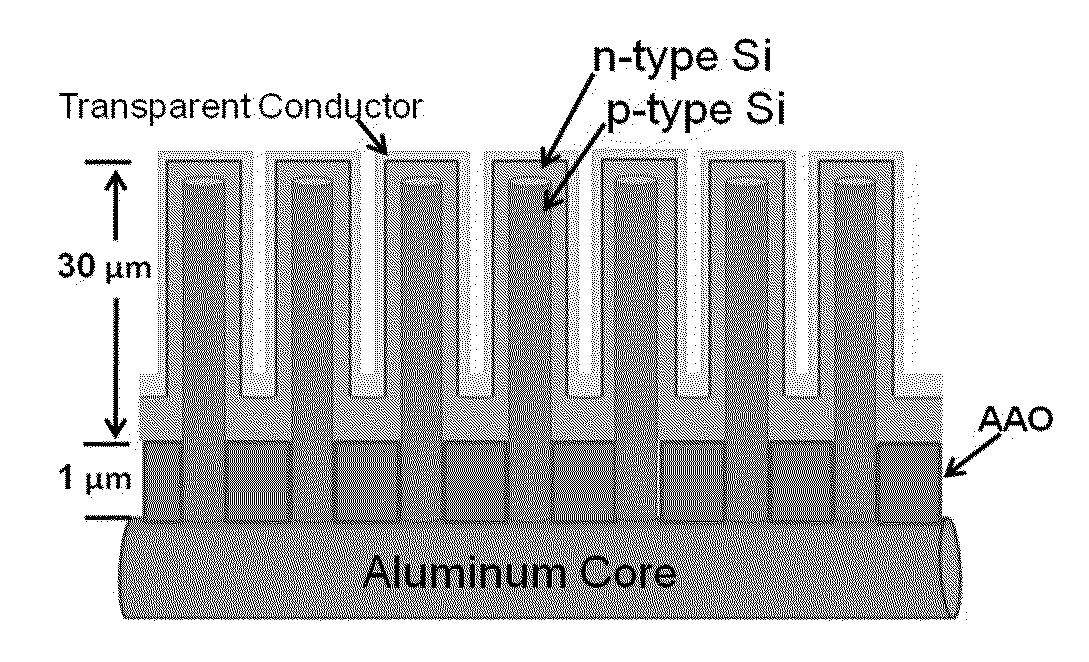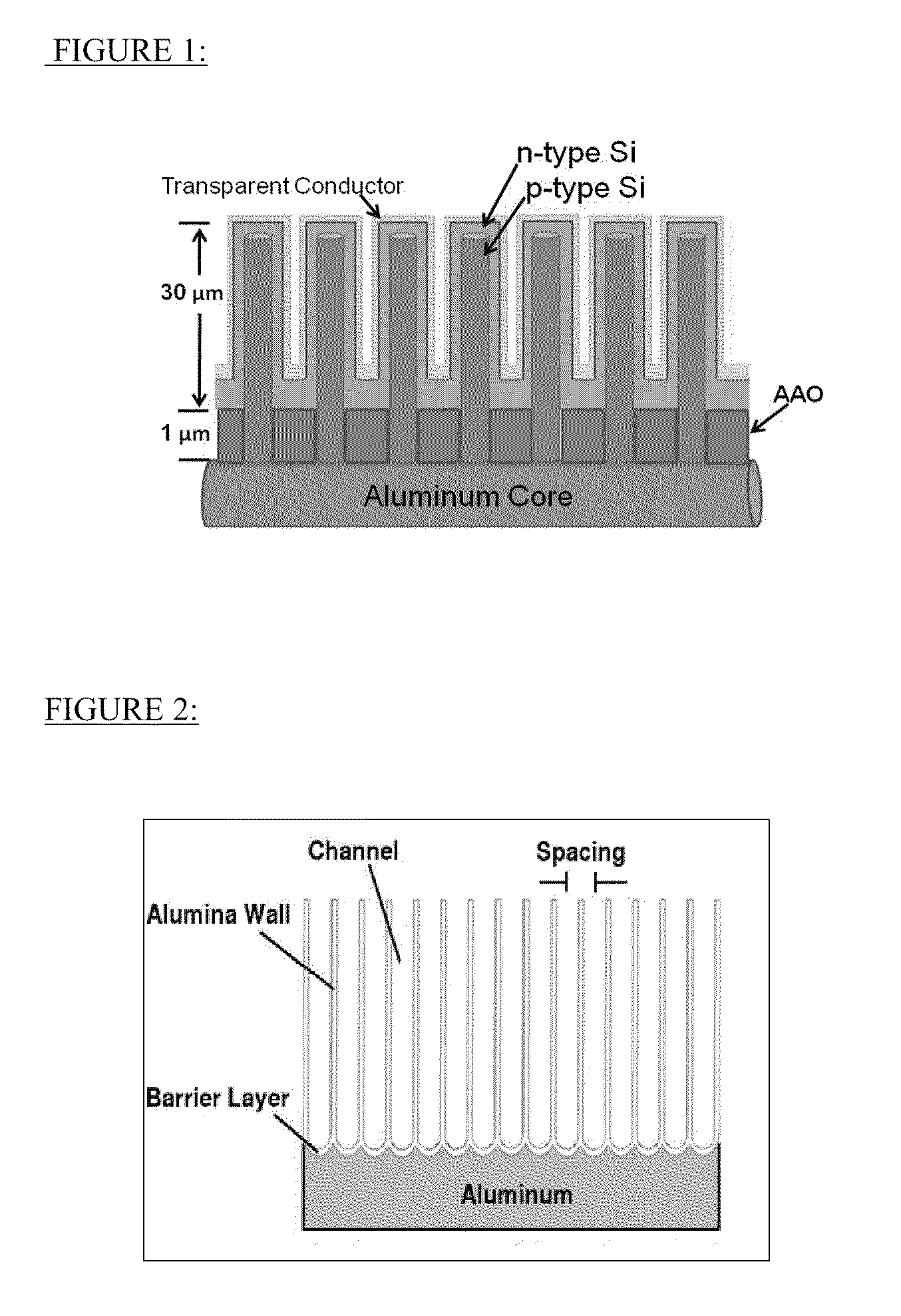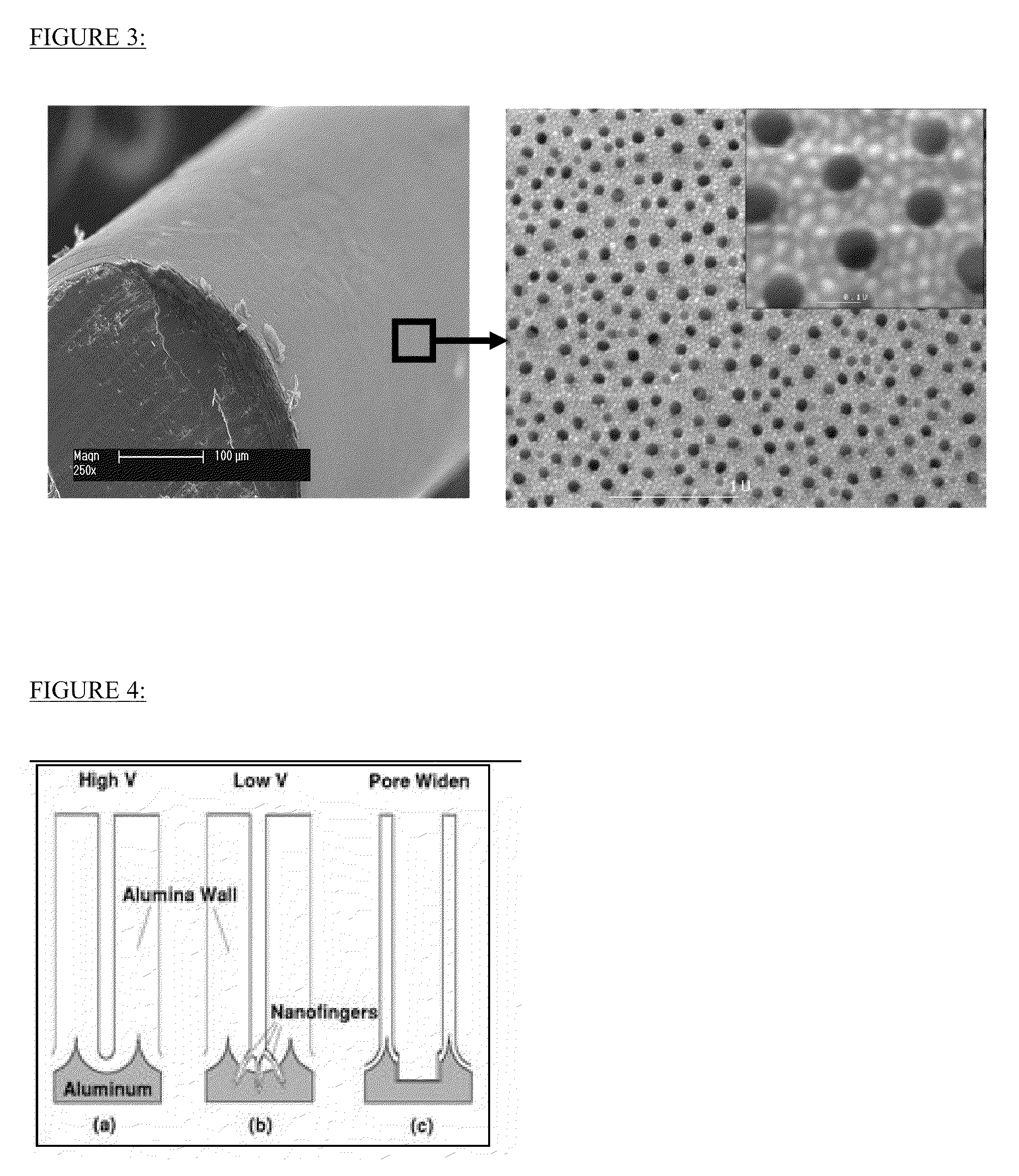Semiconducting nanowire arrays for photovoltaic applications
a technology of photovoltaic applications and nanowire arrays, which is applied in the direction of semiconductor devices, electrical devices, solid-state devices, etc., can solve the problems of high module cost and impede the market acceptance of this clean alternative approach, and achieve the effect of new design attributes and readily produced
- Summary
- Abstract
- Description
- Claims
- Application Information
AI Technical Summary
Benefits of technology
Problems solved by technology
Method used
Image
Examples
Embodiment Construction
[0029]This invention relates to the growth and use of nanowires on substrates in order to produce electrical circuits, including photovoltaic devices.
[0030]The present patent encompasses both the design of SiNW array based PV devices including components that comprise said PV devices, and, the basic process for the stepwise fabrication of silicon nanowire arrays (SiNWs) for PV or other device applications. The method for producing SiNW arrays on partially anodized Al or Al layers adhered to other material structures is presented, in addition to techniques for integrating the engineered SiNW arrays into PV device designs. Practitioners of ordinary skill in the art will readily recognize that the methods and designs described herein can be extended to starting materials other than Al, active opto-electronic nano-structures made from materials other than Si, and devices that utilize metallic and semiconducting nanoscale structures for fabrication and function other than photovoltaics. ...
PUM
| Property | Measurement | Unit |
|---|---|---|
| eutectic temperature | aaaaa | aaaaa |
| temperatures | aaaaa | aaaaa |
| length scale | aaaaa | aaaaa |
Abstract
Description
Claims
Application Information
 Login to View More
Login to View More - R&D
- Intellectual Property
- Life Sciences
- Materials
- Tech Scout
- Unparalleled Data Quality
- Higher Quality Content
- 60% Fewer Hallucinations
Browse by: Latest US Patents, China's latest patents, Technical Efficacy Thesaurus, Application Domain, Technology Topic, Popular Technical Reports.
© 2025 PatSnap. All rights reserved.Legal|Privacy policy|Modern Slavery Act Transparency Statement|Sitemap|About US| Contact US: help@patsnap.com



